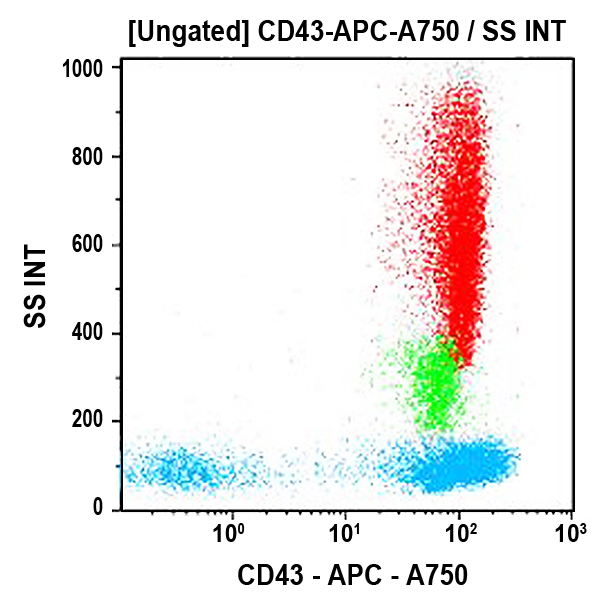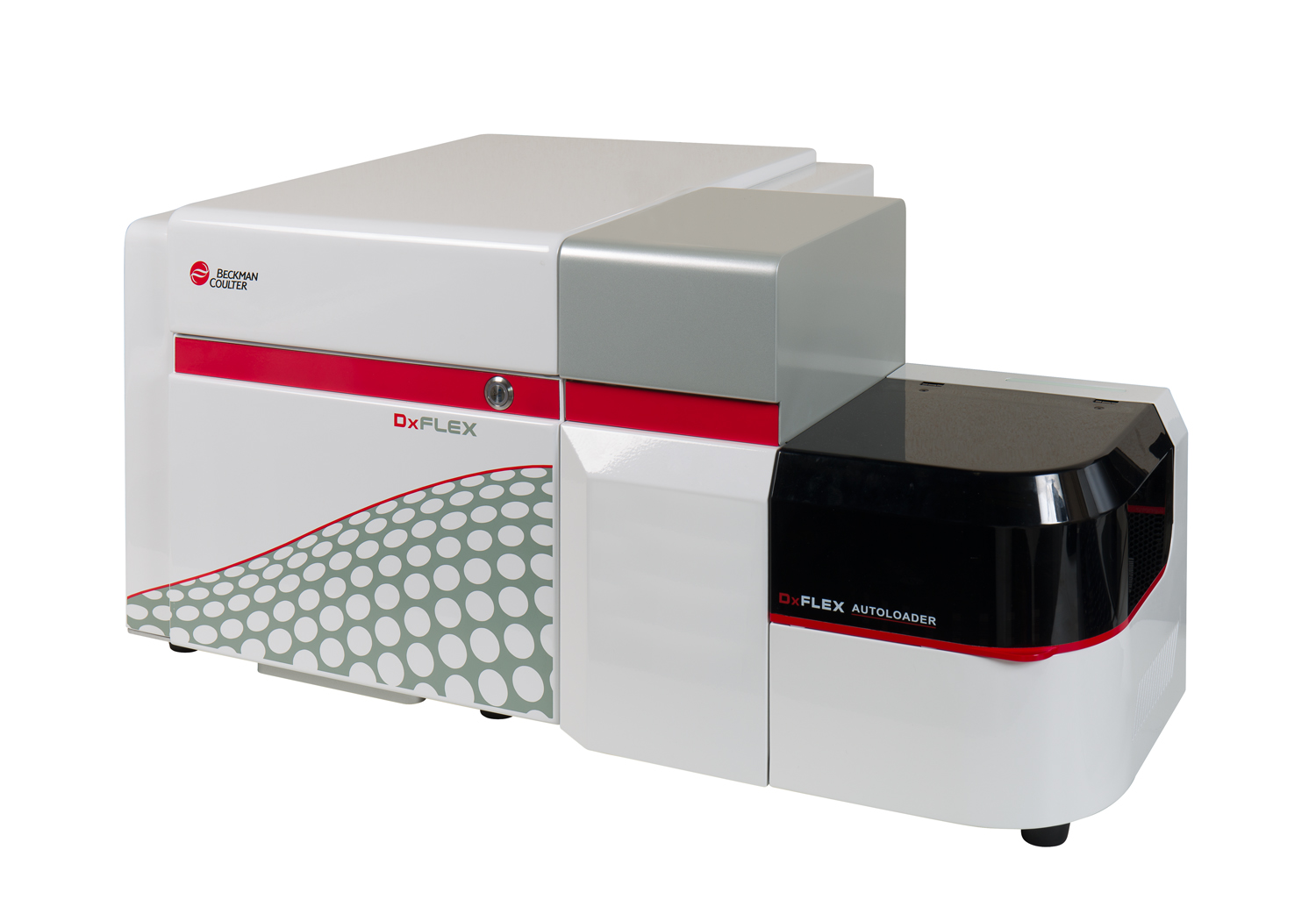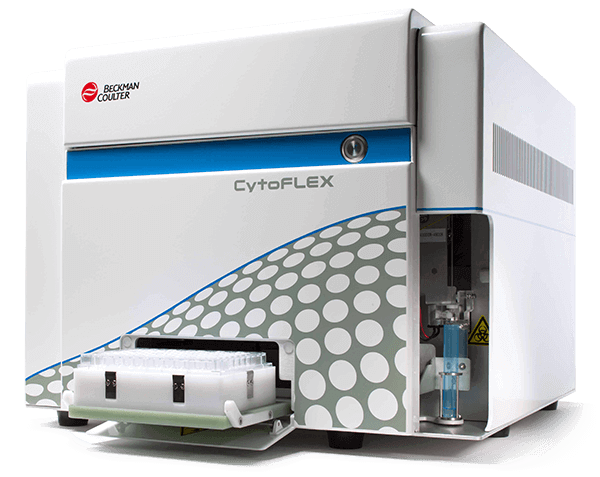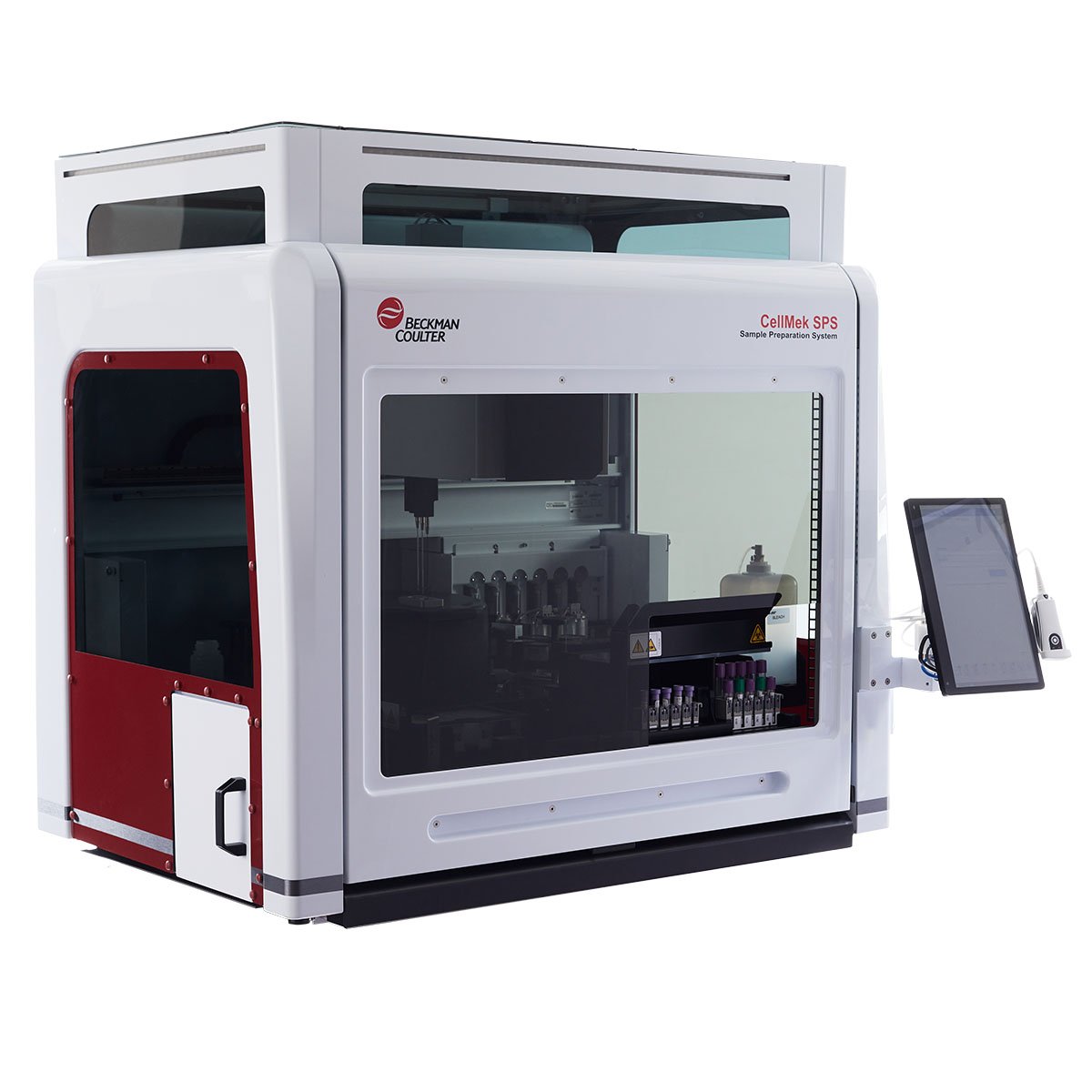CD43 Antibodies
The CD43 antigen is a 95-135 kDa heavily O-glycosylated and sialylated single chain membrane glycoprotein. This cell surface mucin-type glycoprotein is also called leukosialin or sialophorin. CD43 antigen is expressed by T lymphocytes, plasma cells, neutrophils, weakly on resting B lymphocytes but highly after activation, and on platelets. A soluble form of CD43 (galactoglycoprotein) can be detected in plasma. This form is produced by proteolytic shedding of the extracellular portion of the membrane molecule after cell activation. Studies, coupled with recent evidence that CD43 influences cellular adhesion, indicate that differential expression of CD43 may play a role in monocyte/macrophage trafficking.
| Clone: DFT1 | Isotype: IgG1 Mouse |
| The DFT1 antibody reacts with an extracellular epitope of the CD43 antigen. It is useful for detecting leucocytes by flow cytometry and immunohistochemistry on routinely-fixed and parrafin-embedded tissue sections. The DFT1 antibody is also able to induce homotypic adhesion of leucocytes. | |







